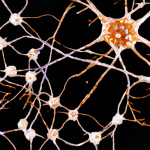Unveiling the Secrets Hidden Beneath: What Is Under Your Skin?
Have you ever wondered what lies beneath the surface of your skin? Our bodies are fascinating and complex, with a multitude of secrets hidden within. In this article, we will delve into the depths of our skin to uncover the mysteries that lie beneath.
The Layers of Your Skin
Before we explore what is hidden beneath your skin, let’s first understand its structure. The skin is composed of three main layers: the epidermis, dermis, and subcutaneous tissue.
The epidermis is the outermost layer and acts as a protective barrier against external factors such as bacteria and UV radiation. It also plays a crucial role in regulating body temperature and preventing water loss.
Beneath the epidermis lies the dermis, which contains blood vessels, hair follicles, sweat glands, and nerve endings. This layer provides support and nourishment to the epidermis, as well as housing important sensory receptors.
Finally, the subcutaneous tissue, also known as the hypodermis, is the deepest layer of the skin. It consists of fat cells that provide insulation, cushioning, and energy storage for the body.
The Fascinating World of Cells
Now that we have a basic understanding of the skin’s layers, let’s zoom in further to explore the intricate world of cells. The epidermis is primarily made up of specialized cells called keratinocytes, which produce a protein called keratin. Keratinocytes form multiple layers, with the outermost layer constantly shedding and being replaced by new cells from the lower layers.
Beneath the epidermis, the dermis is home to various types of cells, including fibroblasts, which produce collagen and elastin fibers responsible for the skin’s strength and elasticity. Other cells, such as melanocytes, are responsible for producing the pigment melanin, which gives our skin its color and protects it from harmful UV radiation.
Additionally, the dermis contains immune cells that help defend against infections and promote wound healing. These cells, known as macrophages and lymphocytes, play a vital role in maintaining the skin’s health and integrity.
The Hidden World of Blood Vessels and Nerves
Beneath the layers of cells, the dermis is rich in blood vessels and nerve endings. Blood vessels supply oxygen and nutrients to the skin cells, aiding in their growth and repair. They also help regulate body temperature by dilating or constricting to release or conserve heat.
The nerve endings present in the dermis are responsible for our sense of touch, temperature, and pain. They transmit signals to the brain, allowing us to perceive and respond to various stimuli from the environment.
Conclusion
Our skin is not merely a superficial covering but a complex and remarkable organ. From the layers of cells to the intricate network of blood vessels and nerves, there is a whole world hidden beneath our skin’s surface. Understanding the structure and function of our skin can help us appreciate its importance and take better care of it.
So, the next time you look at your skin, remember that there is much more to it than meets the eye. It is a fascinating ecosystem that deserves our attention and care.




